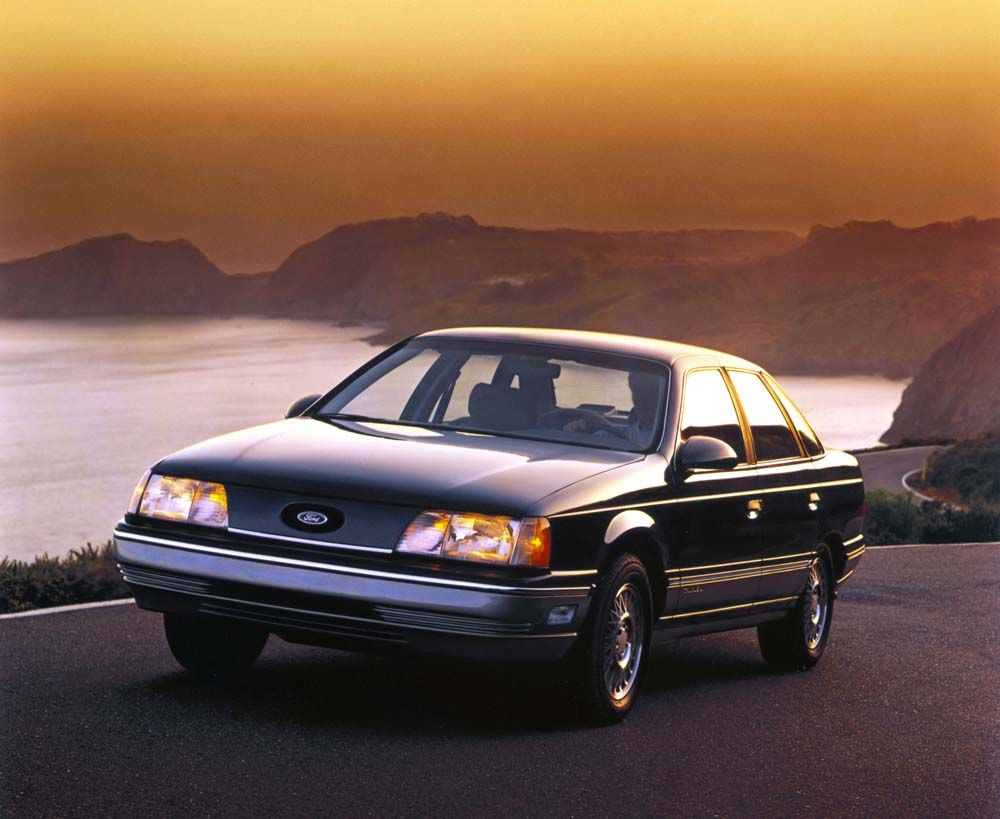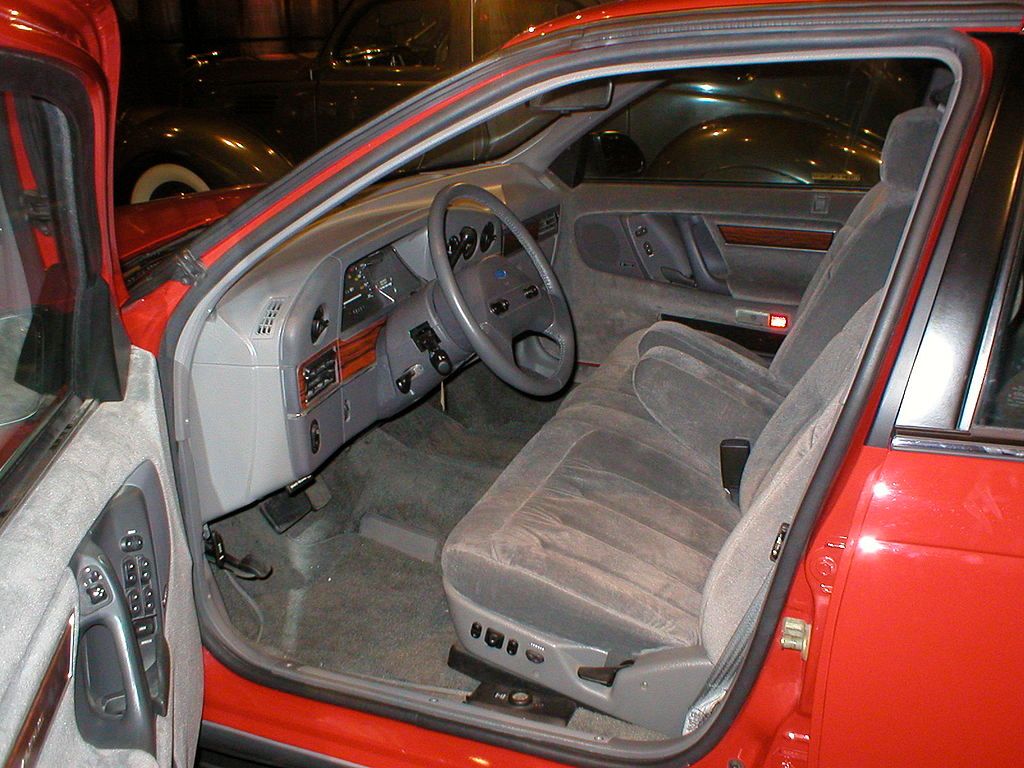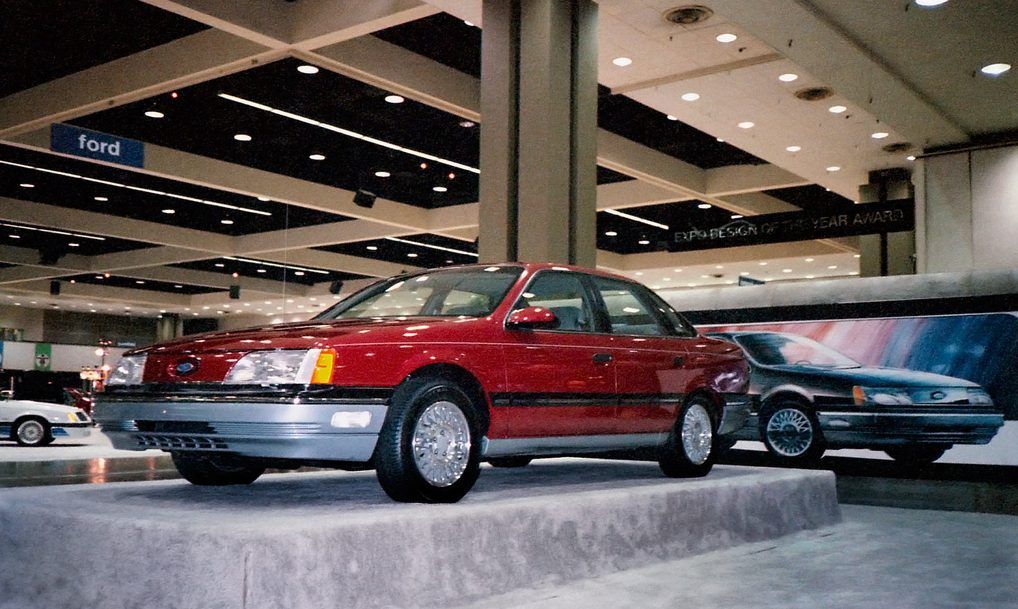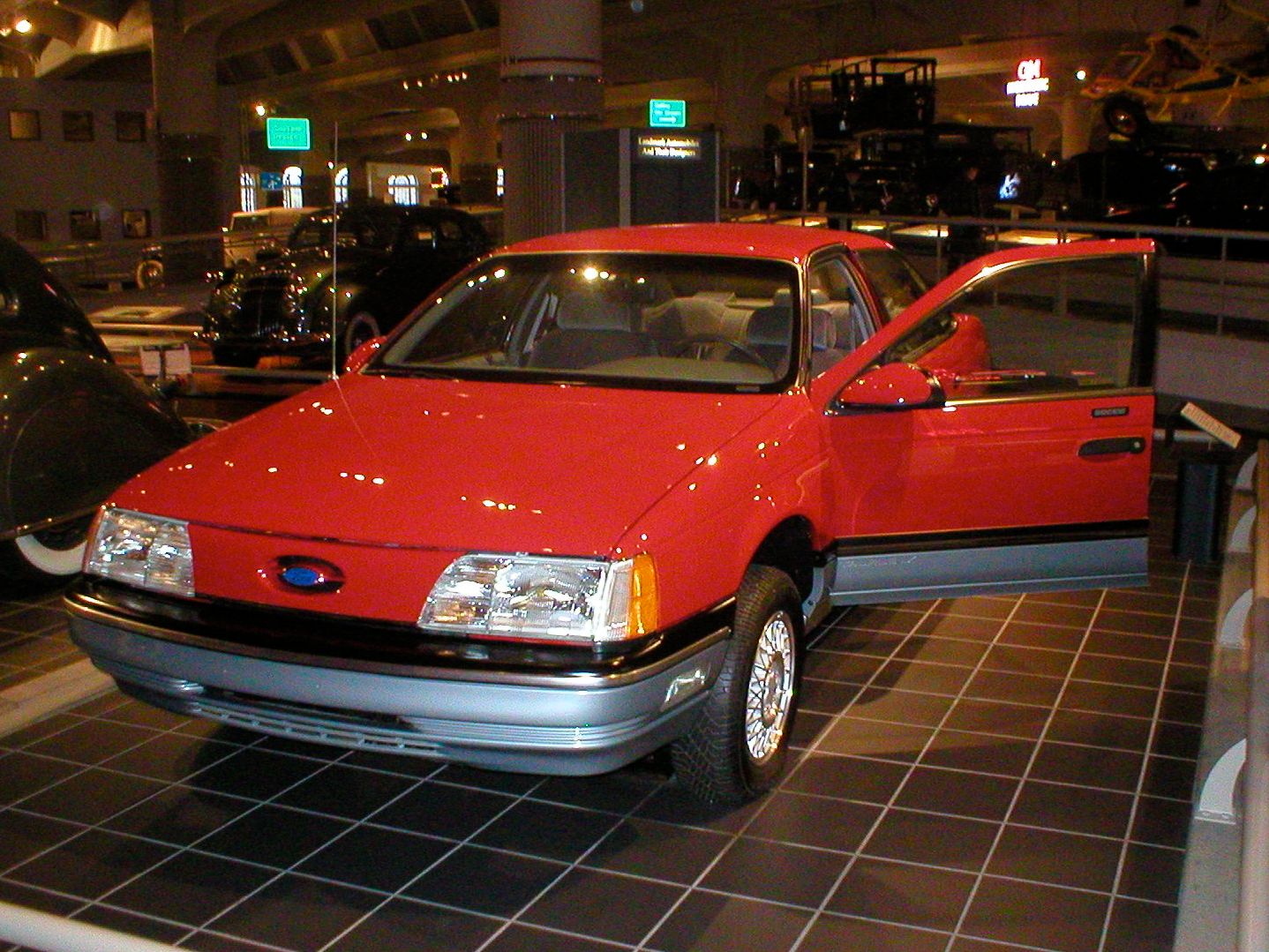The 80s were a very tough time, not just for Ford but also for the American automobile industry. The increasing Japanese imports and the rising oil prices deterred American consumers from The Big Three (GM, Ford, and Chrysler). People were opting for more fuel-efficient cars as opposed to American gas-guzzling cars.
The onus was on Ford to produce a fuel-efficient vehicle in order to gain vigor back in the market and prove that it could meet the exceptionally high-quality standards set by Japanese automakers.
Enter the Ford Taurus, Ford’s answer to compact Japanese cars. In late 1985, Ford released the Ford Taurus for the 1986 model year alongside its slightly luxurious variant, the Mercury Sable.
It was the first product of a new quality culture at Ford, which was spearheaded by the famous statistician, Edwards Deming. Ford had a lot riding on the Taurus, having spent over $3 billion on its development. Lucky for Ford, the Taurus did not disappoint, going on to sell over 200,000 Tauruses.
Let’s take a closer look at the Ford Taurus 1986
Revolutionary Design Of The 1986 Ford Taurus
Although to the modern consumer, the design of the Taurus might seem mediocre, for its time, it was a major shift in the way American Manufacturers were designing their cars. The Taurus was a much-needed break away from the large, gas-guzzling design in favor of a compact, rounder, and fuel-efficient design.
The 1986 Ford Taurus came in two different body styles, a sedan, and a station wagon. The 1986 Taurus featured a rounder shape often likened to that of a jelly bean as opposed to its large, boxy predecessor, the Ford LTD.
Ford focused on making the vehicle more aerodynamic in order to have the Taurus consume less fuel, incorporating revolutionary designs to reduce the drag that the vehicle had to overcome. The Taurus was one of the first American cars to utilize flush aerodynamic composite headlamps. Additionally, the folks at Ford chose to ditch a grilled nose for the Taurus in favor of a smooth nose.
The wheels of the Ford Taurus extended till the fender instead of being recessed into the body allowing the Taurus to overcome drag more efficiently than its predecessors. These design choices allowed the 1986 Taurus to be one of the most aerodynamic cars of its time, achieving a drag coefficient of 0.32.
Inside the Ford Taurus
Alongside implementing aerodynamic design to the body, the designers of the Taurus employed a front-wheel-drive system in lieu of the commonly used rear-wheel-drive system. This allowed the vehicle to weigh significantly less compared to its contemporaries.
The 1986 Taurus was available in four different trims: the L, the MT-5, the GL, and the LX. The L and MT-5 housed an HSC 2.5-litre four-cylinder engine capable of 90 hp. Those who wanted more power out of the Taurus could opt to upgrade the L model to a 3.0-liter Vulcan V6. The Vulcan V6 was a 140 hp that came standard on the GL and LX models.
Out of all the models, the MT-5 was the only model which offered a manual transmission. This model used a 5-speed manual transmission, whereas the vehicles equipped with the HSC engines used a 3-speed automatic transmission. Lastly, the V6 Taurus was equipped with the latest at the time 4-speed AXOD automatic transmission.
Defying All Odds
When the 1986 Ford Taurus was unveiled, there were many who believed that it was going to be a big flop. Industry journalists, executives at Chrysler, and even Ford held low hopes for the Taurus. Ford continued to produce the Ford LTD in order to recoup the potential loss due to the Taurus.
The Taurus defied all odds and went on win many awards, namely the 1986 Car and Driver Ten Best List and the 1986 Motor Trend Car of the Year. The success of the Taurus saved Ford from filing Chapter 11 bankruptcy.
Legacy Of The 1986 Ford Taurus
The 1986 Ford Taurus was a great success, being in production for 34 years and 6 generations. The first generation of the Taurus garnered a total of 2,030,791 sales. The success of the Taurus, later on, gave birth to the high-performance Ford Taurus SHO, which was a hit amongst motorheads.
The success of the Ford Taurus helped pull Ford out of a slump and sway the attention of American consumers away from foreign automobiles back to American vehicles. The revolutionary design and success of the Ford Taurus inspired other American automakers such as Chrysler and General Motors to produce aerodynamic cars as well.
The 1986 Ford Taurus convinced the US NHTSA to abolish its requirement for headlight shapes to be round and rectangular to accommodate for its flush aerodynamic composite headlights. Many of the innovative design features of the 1986 Taurus were adopted by other car manufacturers and are even used today on most vehicles.





